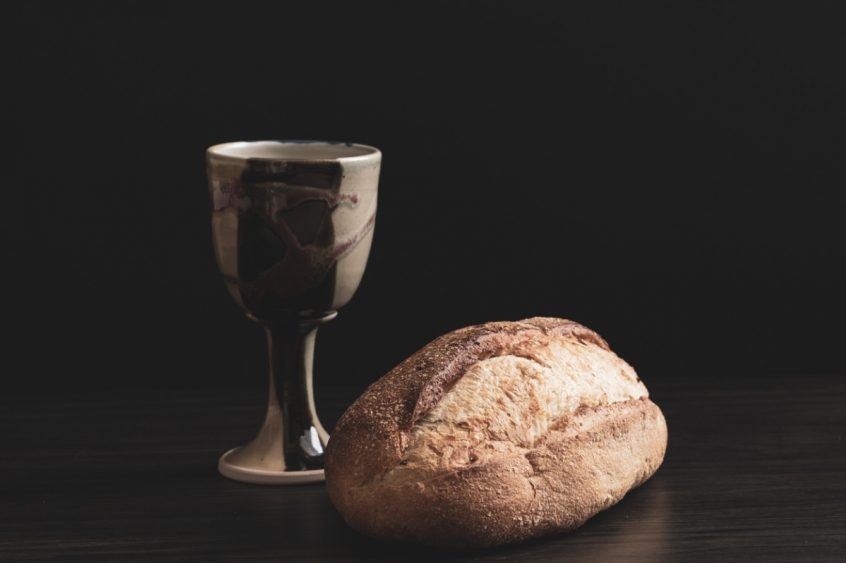
One of the striking characteristics of the order of service of the coronation is the way that it is set within the Eucharist, or Holy Communion, as practised by the Church of England, whose roots stretch back to the Last Supper. This fact provides a vivid insight into the way that the coronation and the monarchy are indebted to the Christian faith.
Several coronation orders of service survive, whose history stretches back over a thousand years. They are known as ordines (from Latin 'ordo,' 'order') or recensions. They are numbered as the "First Recension", "Second Recension," etc, although slightly different numbering systems can be found in histories of the rite because the one used at the coronation of Edgar in 973 is sometimes counted as the first one. This is because two versions of Anglo-Saxon coronation services survive.
However, the only one we know was used and can be dated with some certainty is the one used in 973. This one - the second of these orders of service (the Second Recension) – is generally interpreted as the one used at the coronation of Edgar, at Bath, in 973, and is associated with the work of Dunstan, the Archbishop of Canterbury. It was then used by later Anglo-Saxon and early Norman kings. So, it is technically the second one (the numbering used here), although some historians start their numbering with this one!
This order of service was indebted to continental practices in West Frankia (at its largest extent stretching from the Low Counties, through France, to Catalonia). This is a reminder of the wider European nature of British monarchy, history, language, and culture over many centuries.
What stands out is that the coronation rite that was devised was firmly set within the established order of service of the Eucharist; combined with aspects of that for the ordaining or consecrating of a bishop. The spiritual nature of kingship was being firmly stated.
Probably during the reign of Henry I (crowned 1100), a third order of service (the Third Recension) was devised and this one was used at the coronation of his successor, Stephen, in 1135. This coronation order borrowed large parts from that used in the Holy Roman Empire in central Europe and originally compiled in Mainz in 961.
Once more it brought English royal behaviour into line with continental practices. The Third Recension continued to be used until (and including) the coronation(s) of Henry III (who was crowned in 1216 and had a second crowning in 1220) and that of Edward I (in 1274).
Increased emphasis on Holy Communion within the coronation service
This twelfth-century order of service continued to be used until the coronation of Edward II in 1308. It was then that a new order (the Fourth Recension) was produced that was influenced by the contemporary French coronation ceremony. However, the English version differed because it reflected the English monarchy's reliance on the assent of the nobles and, arguably, the implicit support of parliament. A manuscript of it survives at Westminster Abbey, called the Liber Regalis (dating from the 1390s).
While all previous coronations had been set within the framework of a service of the Eucharist, this one greatly increased the focus on the Mass (the term for the Eucharist used by Roman Catholics). Among other additions were two collects, an epistle reading, a gospel reading, a special blessing, and two post-Communion prayers.
As a result of the additions made to the service, the new order was much longer than previous coronations and, even more than they did, connected the crowning of the new monarch with the celebration of Christ's sacrifice and his continuing presence in the lives of his followers.
Similarly, while the focus on anointing was not new, the emphasis increased in this order of service. According to it, the monarch was anointed in eight places with holy oil and on the head with chrism. This order of service was used, with alterations, right through into the seventeenth century.
A significant revision was made in 1689 by William Compton, Bishop of London, for William III and Mary II. This one has been adapted for each subsequent coronation, right through into the twenty-first century. However, in many ways the modern coronation is still indebted to that of the Fourth Recension of 1308. It is an ancient tradition.
The importance of the Eucharist within the coronation
As we have seen, all coronations are set within a service of the Eucharist and this has been the case since the distant events of 973 at Bath, with the crowning of King Edgar.
The anointing, the investing with the glittering regalia, the crowning, the enthronement, and the homage are, understandably, the extraordinary events which draw most attention. However, it is highly symbolic that – lengthy and dramatic though they are – they do not represent the climax of the coronation service.
This is because it is the liturgy of the Eucharist (in traditional language) which draws the service to its completion. This liturgy, which celebrates the sacrifice of Jesus and whose roots go back to liturgies of the third century or earlier, culminates in the singing of the Agnus Dei:
"O Lamb of God, that takest away the sins of the world, have mercy upon us.
O Lamb of God, that takest away the sins of the world, have mercy upon us.
O Lamb of God, that takest away the sins of the world, grant us thy peace."
During this singing, the king and queen take Holy Communion. This is, in effect, the climax of the service.
Then follows the post-Communion prayer and final blessing; the hymn, anthem, Te Deum, and the national anthem. St Edward's Crown is exchanged for the Imperial State Crown and the king and queen process through the abbey to the west door.
The exception to this Eucharistic focus in coronation history was that of James II in 1685, which omitted Communion. This was because James was a Roman Catholic and he and the Church of England (over which he was the supreme governor) had dramatically different theologies regarding the significance of the Eucharist (Protestants rejecting the Catholic doctrine of transubstantiation) and differences over the form that the celebration of Communion should take.
The powerful message of bread and wine
Within the glittering pageantry and ceremonial, the eucharistic character of the coronation order of service emphasises that human beings encounter God in Christ's love and sacrifice. All human power and authority are under God. Only when brought into line with God's will and standards, do they function as they should.
That is why, in many ways, it is Communion, rather than crowns, that is the most important and counter-cultural aspect of the coronation service. That is a very challenging message, and a profound one. It has been so since AD 973 and Edgar's coronation in Bath.
Martyn Whittock is a historian, columnist, and lay minister in the Church of England. Having written books on a wide range of historical and theological themes, he has a particular interest in the impact of the past on the present, and the interaction of faith and culture/politics. His recent books include: Jesus the Unauthorized Biography, The Story of the Cross, and The End Times, Again? He has appeared on news and talk shows, on television and radio, discussing historical themes, faith and the crown in the UK, US politics, and the war in Ukraine (including its religious dimension).













